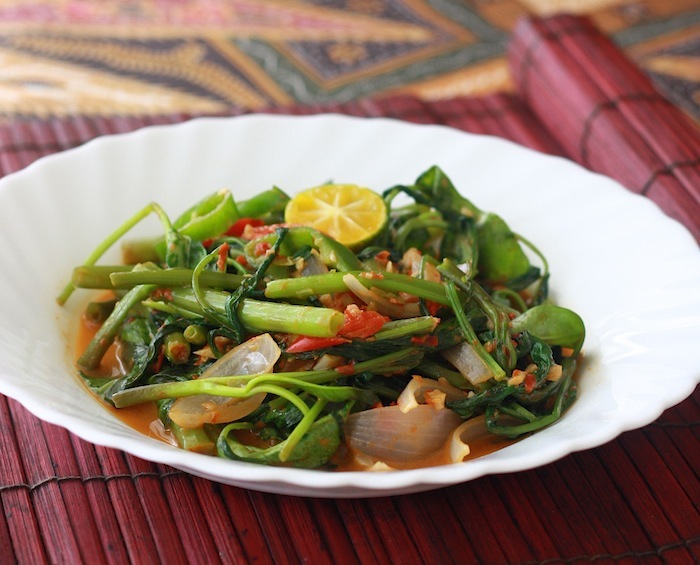 Sambal Kangkong (马来风光), one of the signature Asian dishes you can easily find, especially in Singapore where this is one standard dish to have in a Zi Char stall.
Sambal Kangkong (马来风光), one of the signature Asian dishes you can easily find, especially in Singapore where this is one standard dish to have in a Zi Char stall.
But have you ever heard this from your folks before?
Don’t eat so much kangkong, otherwise you will suffer leg cramps at night!
Well, I do. And one reason given is that kangkong belongs to the cooling type of TCM properties, so for those who tend to get cold limbs easily would suffer from leg cramps if consumed excessively.
But is it true? And has anyone ever experienced this symptom from over-eating kangkong? Would there be anyone who loves this vegetable so much that he or she would eat it every meal and every day? Also, what causes leg cramp?
First, Getting to Know About Kangkong
Kangkong has many names:
- Scientifically known: Ipomoea aquatica
- Commonly known: Water spinach, river spinach, water morning glory, water convolvulus
- In Asia, even more known as: Chinese spinach, Chinese watercress,
- In Cantonese, or in Hong Kong/Taiwan: ong choy 蕹菜, tong choy 通菜, kong sum choy 空心菜, or chuo gam choy 抽筋菜
Nutritional Benefits
In addition, water spinach is an alkaline food which can reduce the acidity of the intestinal tract, prevent the imbalance of the bacterial flora in the intestine, and is beneficial to cancer prevention.
The chlorophyll element in water spinach is known as the “green spirit”, which can clean teeth, prevent caries and remove bad breath, and build skin, therefore acts as a good beauty product.
It is recorded also in the “Chinese Dictionary of Traditional Chinese Medicine” (《中国中药大辞典中》) that water spinach contains certain plant insulin components, which can help patients with type 2 diabetes control blood sugar. While water spinach might lower blood sugar levels, this might cause the blood sugar level to drop further for those who are taking diabetes medication. Therefore, it is advised for them to monitor the blood sugar closely.
Besides that, with the nutritions in water spinach, it can also help to manage high blood pressure. Therefore, for those who are taking high blood pressure medication, it is also advised for them to monitor their blood pressure regularly.
TCM Perspective
Because of its cooling nature and benefit to disperse heat, this vegetable is commonly consumed to drive away the summer heat.
And because of its cooling nature, this is usually not recommended to be excessively consumed for the following:
- Body constitutions of yang deficiency and qi deficiency, or
- Those who tend to have weak stomach or often experience loose stools or
- Those with low blood pressure
As these would easily cause symptoms of nauseous or stomach cramp.
But you can add sambal chilli or garlic to the vegetable to neutralise the cooling nature! So, with such added spices, women who are pregnant, breastfeeding or having menstruation can still safely consume water spinach while enjoying its nutritional benefits.
How about Leg Cramps?
Muscle cramps can be due to any of the followings:
- Long periods of exercise or physical labor, which leads to overuse of a muscle
- Dehydration
- Muscle strain
- Underlying medical conditions such as inadequate blood supply which is due to the narrowing of the arteries that deliver blood to the legs, nerve compression in the spine (lumbar stenosis), or mineral depletion, e.g. too little potassium, calcium or magnesium in the diet or due to diuretics medication which is often prescribed for high blood pressure and can deplete these minerals.
You may read more from this link: https://www.mayoclinic.org/diseases-conditions/muscle-cramp/symptoms-causes/syc-20350820
If we look at the meridians which the TCM benefits of water spinach channels to, particularly the stomach meridian (which travels on the front of the body), it seems that this does not travel to the back of the legs where cramp occurs.
There is also another possible explanation that due to the cooling nature of water spinach, excessive consumption can easily form the pathogenic cold which accumulates to form stagnation in the qi and blood, causing inadequate blood supply to the legs therefore can lead to cramps, especially for those who experience cold limbs. While I have heard that there are people who do get legs cramps after eating water spinach, this symptom does not apply to all.
Nevertheless, the nutritionists comment that there is insufficient evidence to support such claim.
So what’s the conclusion?
Given there are claims that this does happen to a minor group of people, this symptom is possible but rare.
Interesting Facts
On the other hand, with the modern and TCM science laid side by side, it is interesting to see the similarities of views on the benefits and side effects of water spinach between these two types of sciences. The key difference is how it is being explained.
01 | Excessive consumption of water spinach can cause adverse effects on the digestive systems, e.g. nauseous and stomach cramps.
Reasons being that from modern science, this is caused by the excessive intake of dietary fibre while from TCM perspective, this is caused by the accumulation of pathogenic cold on the digestive system.
02 | Water spinach helps with promoting bowel movements.
While modern science uses the nutritional facts to explain, TCM explains that another nature of water spinach is its smooth tender, as mentioned in this TCM literature .
“性滑利,能和中解热,大便不快及闭结者宜多食,叶妙于梗。” (“Smooth nature, able to harmonise the neutral state and dissolve heat, recommended for those who suffer from constipation, leaves better effects than its stem.”)
《饮食辨》(By 章穆, Qing Dynasty)
03 | Water spinach has a strong detox function.
From the perspective of modern science, the rich content of dietary fibre which is composed of cellulose, lignin and pectin. Pectin can accelerate the excretion of toxic substances in the body, and lignin can increase the vitality of macrophages to swallow bacteria, sterilize and reduce inflammation.
In addition, the potassium in water spinach can maintain the pH level in the blood, therefore has the TCM effects of cooling the blood and detoxification. This can therefore help prevent excessive accumulation of carbon dioxide within the bloodstream, leading to the acidity in the blood, therefore can cause chronic conditions.
Similarly under TCM perspective, the spinach juice has the effects to relieve symptoms from food poisoning, as well as stopping nose bleed. In addition, the oral intake of the vegetable and external application of the mashed vegetable can help with relieving boils, swelling, insect bites, prickly heat, eczema and other skin diseases that often occur in summer.
“内服解饮食中毒,外用治一切胎毒,肿物和扑伤。” (Take orally to relieve food poisoning, and external application to treat all fetal toxins, swells and bruises.)
《广州植物志》(first published in year 1956)
“治鼻血不止,蕹菜数根,和糖捣烂,冲入沸水服” (To treat nose bleed, use several pieces of water spinach roots, mash together with sugar, and mix with boiled water before consuming)
《岭南采药录》(first published in year 1932)
“治皮肤湿痒,鲜蕹菜,水煎数沸,候微温洗患部,日洗1次。” (To treat eczema, use fresh water spinach, boil with water, apply on skin to clean when the juice temperature is lukewarm, once daily.)
《闽南民间草药》
(first published in year 1959)
For these TCM methods of using water spinach to treat these conditions, do discuss with a TCM physician first. These are situations when we are worried that our patients do not practise proper hygiene habits while attempting these treatment methods.
04 | Water spinach is currently listed in the U. S. Federal Noxious Weed Act, especially in Florida, California and Hawaii.
While this has nothing to do with modern science and TCM, this is one which I personally find it intriguing. Because of its natural aggressive growth in the wild and water spinach is not America’s common vegetables, poor water spinach is considered as a weed in US.
How to Select, Store and Prepare Water Spinach?
Select those with greener and larger leaves as they are more flavorful than those with smaller ones.
Water spinach can easily spoil if they are not stored in the cool surroundings, therefore it is best to consume as soon as possible. Keep them wrapped in wet towels, and store refrigerated. If not, you can also wrap them in paper to keep dry. They can be stored for 3 to 5 days.
Due to its aquatic environment where they are grown, wash in clean, running water, and soak in saltwater for about half an hour in order to rid off parasite eggs and worms that thrive well under aquatic conditions.
Any Complementary and Contraindicating Ingredients Pairing?
Yes, there are! The following are for your consideration!
References:
http://blog.seasonwithspice.com/2012/05/malaysian-sambal-belacan-kangkung.html
https://www.webmd.com/vitamins/ai/ingredientmono-365/spinach
https://www.pingguolv.com/sl/yingyang/102811.html
https://zi.media/@yidianzixun/post/kQsvEe
https://www.nutrition-and-you.com/kangkong.html



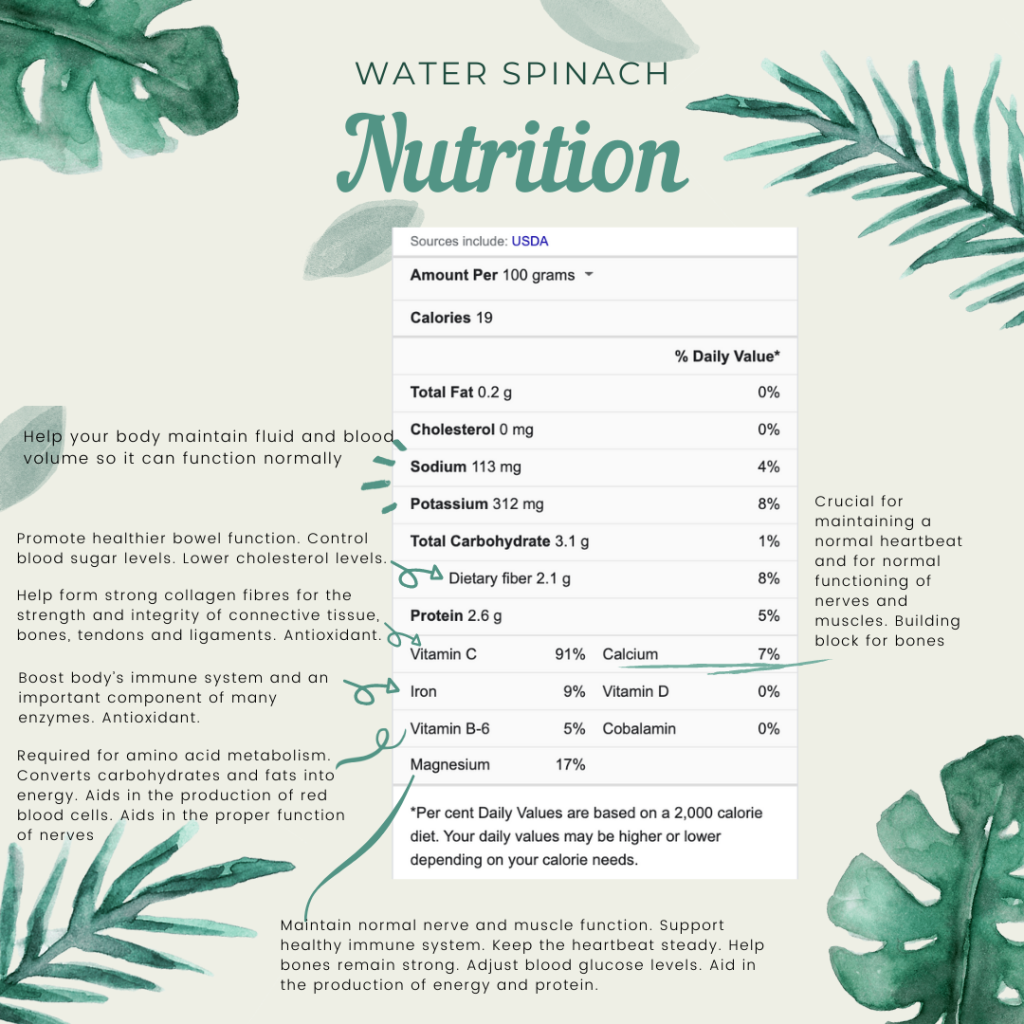
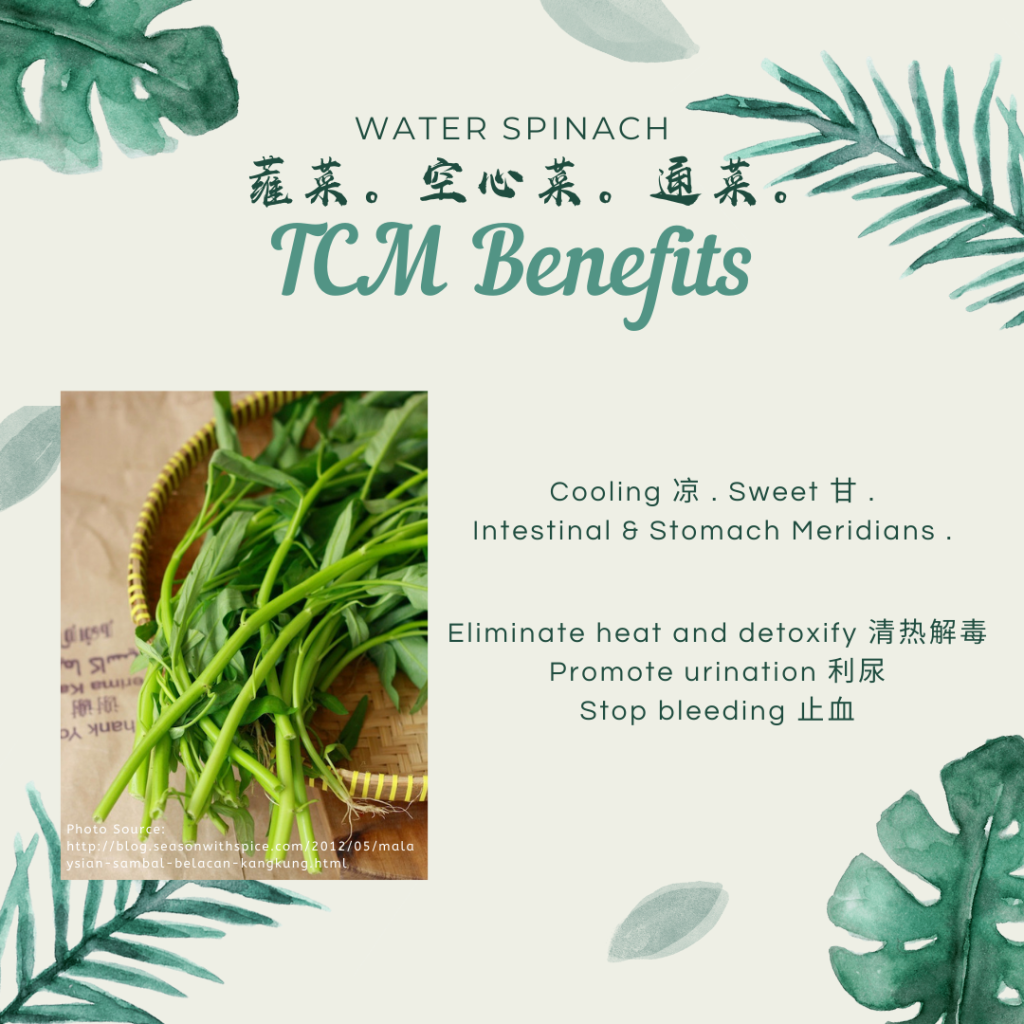
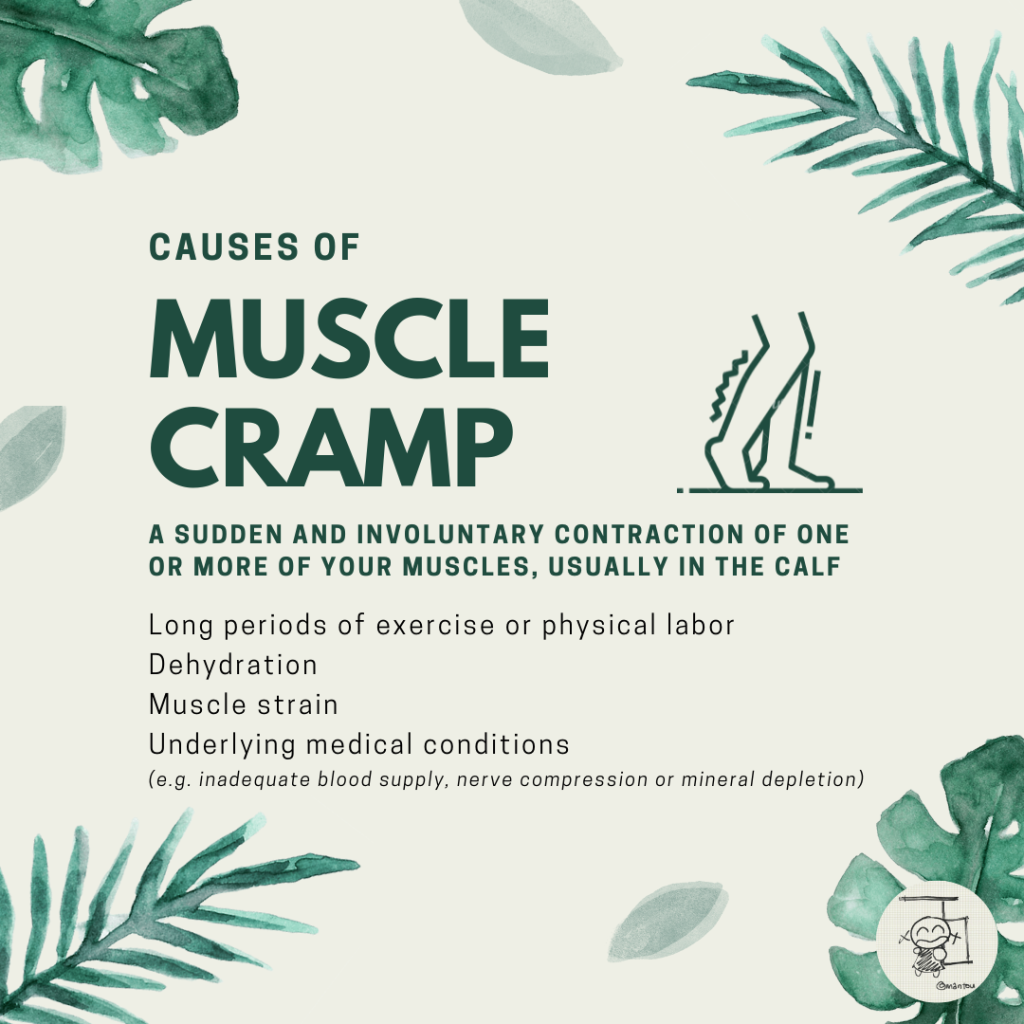

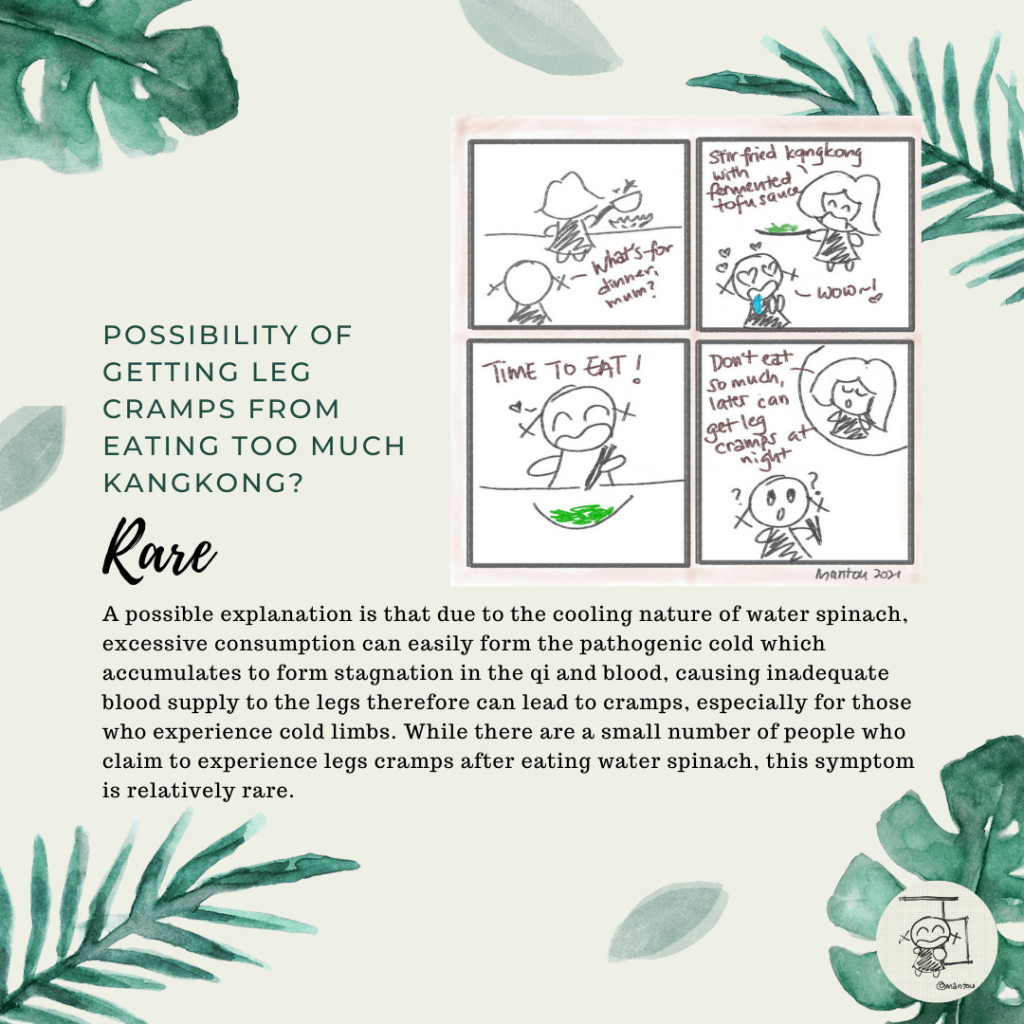

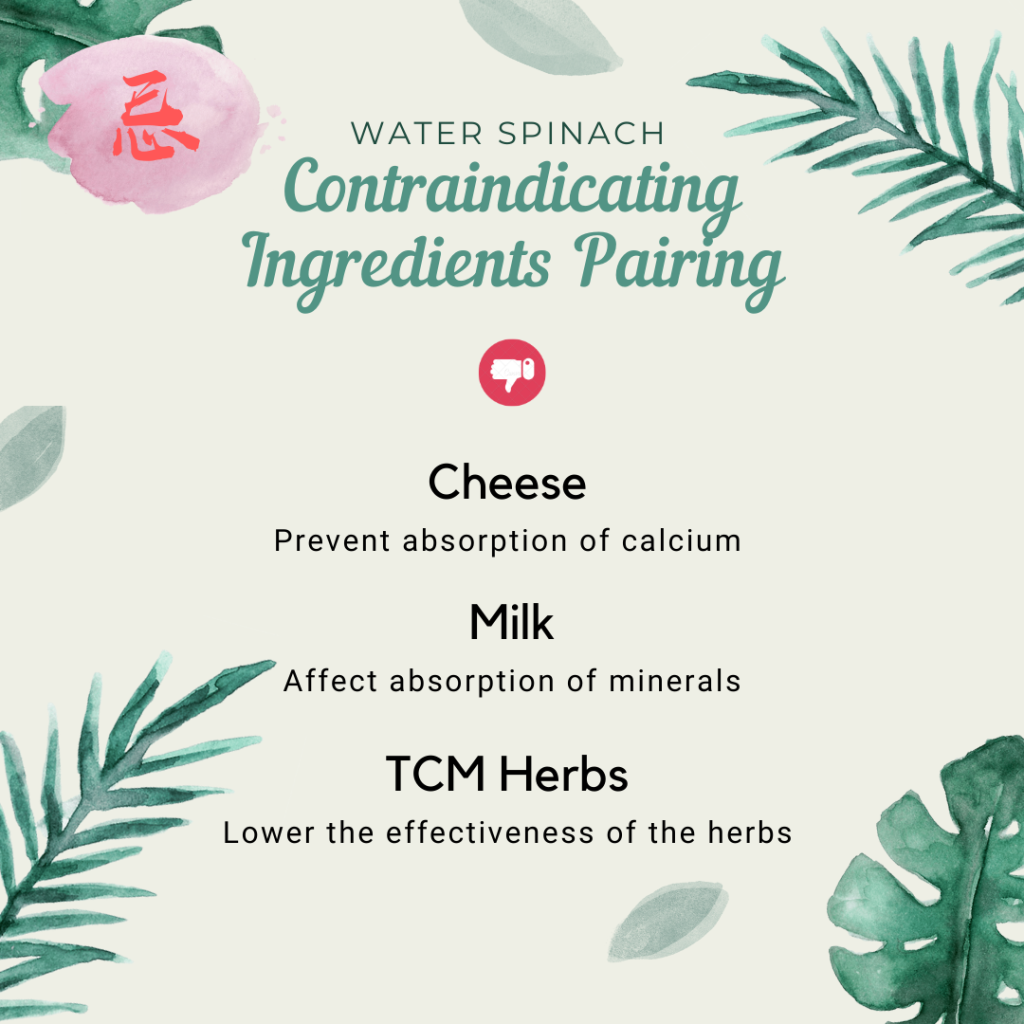
Leave a comment